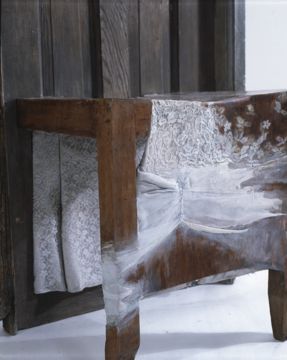
Doris Salcedo, La Casa Viuda I (detail), 1992-94, Collection of Worchester Art Museum
Looking through the interviews and essays featured in Art:21- Art in the Twenty- First Century 5, the companion book to season 5, I keep discovering a ton of words to teach by. This past weekend, as I prepared to work with one of my classes, I began flipping through the section featuring Doris Salcedo and found two quotes that kicked off this week:
As an artist, I have a responsibility. I have to look at historical events and work with whatever material is given to me.
The memory of anonymous victims is always being obliterated; I’m trying to rescue it. That’s why my work does not represent something; it’s simply a hint of something- trying to bring into our presence something subtle that is no longer there.
What I enjoy about these two quotes really centers on how artists must confront history- questioning beyond facts and figures in order to get to the why. How do we question the framing of history as artists and art educators working with students? How do we create work that embraces, and even encourages, multiple perspectives? How can we rescue memory, even our own?
When students choose to make work that is about a time and a place, there can be a commitment to investigate that time and place in a way that starts with history and enters into a different kind of learning through interpretation and giving that perspective a specific form.




Pingback: What’s Cookin at the Art21 Blog: A Weekly Index | Art21 Blog